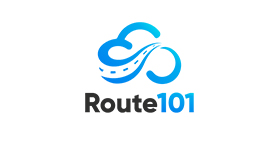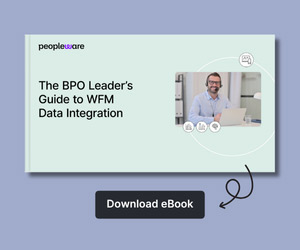Shaunna Ruddick at Route 101 explores how modern Workforce Engagement Management (WEM) strategies can move beyond outdated metrics to support, motivate, and empower agents.
The most valuable asset of any contact centre is its people. Agents interact with customers every day, giving them unique insights into what works, what doesn’t, and what improvements can be made. Their knowledge, skills and dedication directly shape service quality and customer satisfaction.
Businesses therefore need to harness this potential by implementing Workforce Engagement Management strategies.
By focusing on employee support, motivation and well-being, organisations can build committed teams that deliver exceptional service. Investing in people isn’t just good for staff – it’s the foundation for better customer outcomes and long-term business success.
Furthermore, as technology evolves and the industry changes, it’s vital that WEM strategies also adapt. Contact centres have become much more than just phone-in call centres’, with agents having to manage higher volumes of increasingly complex interactions across multiple channels.
On top of this, customer expectations around service have become higher than ever, and the pressure on agents is only growing.
As such, organisations must ensure that they’re developing modern WEM strategies that can support agents in today’s workplace.
Looking Beyond Outdated Metrics
All businesses require metrics and Key Performance Indicators (KPIs) to provide information on how well they are performing and where they could improve.
For contact centres, this has usually been Average Handle Times (AHT). However, as contact centres have developed and become more complex, this metric has grown outdated, and a more flexible approach is needed to take this into account.
Furthermore, for many agents, pressure to meet AHT requirements can weigh heavily, leading to low morale, a less engaged workforce and a higher staff turnover.
As a result, the entire contact centre is less effective, and customers are not being provided with the best service possible.
It is time for businesses to set aside the outdated view of quantity over quality. Instead of focusing on time-based metrics above all else, they should focus on providing a quality service to customers, enabling agents to build a rapport, truly understand the issues at hand and find the best resolution.
This new approach values customer satisfaction over the number of customers served, taking the pressure off agents, building a more harmonious and dedicated workforce, and consequently improving customer experience.
The introduction of artificial intelligence and agentic AI into the industry also plays a big part in this. AI is able to take on simpler and more routine requests, freeing agents up to focus on the more challenging cases.
Additionally, as businesses shift their KPIs to focus on customer satisfaction, AI systems can recognise and report on customer sentiment and feedback, helping to build that more holistic picture.
Ensuring a Healthy Work Environment
To enable employees to work to their full potential, it is vital to provide a healthy work environment that will not lead to undue stress or overworking. Perhaps one of the best ways to provide this for staff is to champion flexibility.
Whether this be by offering the ability to take an hour out for key appointments, or introducing split shifts, empowering agents to work in ways that best suit them will significantly improve their work-life balance, boost morale, and increase staff retention.
Another more unusual idea being tried by some businesses are days off on demand. This approach provides workers with a set number of days they can take off at a moment’s notice, without needing to wait for company approval.
While on the face of it, this approach sounds risky, there are already contact centres where this has been implemented – and it’s working.
By allowing agents to take a day to recuperate and recharge when feeling burnt out, anxious, or overly stressed, employee engagement improves.
Similar benefits can be achieved if a business is able to allow last-minute or hourly holidays. This flexibility for employees promotes their well-being and will also ensure that time off and holidays are properly utilised.
When these processes are properly implemented alongside, or even integrated within, a company’s WEM solution, these requests can be submitted and approved within minutes, reducing lengthy approval processes and giving important time back to the business.
The Importance of Recognition and Appreciation
For many organisations, one part of a WEM strategy that they overlook is the need to give regular and consistent appreciation for agents.
Recognising and rewarding those agents who go above and beyond in their role will boost motivation across the workforce.
This can be done through weekly recognition posts, gamification, or incentives like vouchers and extra breaks. However, it is also important to ensure this recognition is given fairly and transparently to ensure that team camaraderie is not overshadowed with unhealthy competitiveness or jealousy.
As well as individual recognition, businesses should also show appreciation and support for the whole team – for example by offering staff comfort breaks when needed to allow agents to breath, take a moment and realign themselves before continuing to support customers. Everyone needs time to recentre, gather thoughts and destress.
Ultimately, by shifting away from outdated, pressure-driven metrics and embracing flexible WEM strategies, contact centres can unlock the full potential of their agents.
Prioritising well-being, recognising contributions, and leveraging technology to ease workloads not only empowers staff but also strengthens customer relationships, driving long term business success.
For more information about Route 101 - visit the Route 101 Website
Call Centre Helper is not responsible for the content of these guest blog posts. The opinions expressed in this article are those of the author, and do not necessarily reflect those of Call Centre Helper.
Author: Route 101
Reviewed by: Jo Robinson
Published On: 3rd Sep 2025
Read more about - Guest Blogs, Route 101






 Route 101 is an award-winning technology systems integrator, delivering market-leading cloud contact centre and customer engagement software and solutions. Its products and services help clients to transform their customer engagement, support and empower their workforce, and boost their business operations.
Route 101 is an award-winning technology systems integrator, delivering market-leading cloud contact centre and customer engagement software and solutions. Its products and services help clients to transform their customer engagement, support and empower their workforce, and boost their business operations. 





























